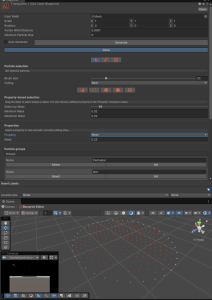11-04-2025, 10:13 AM
I am trying to implement a landing net for a VR fishing game but I am having trouble keeping an object inside the net. The collisions seem to work well at times but the fish pierces through the net too easily. I have tried changing every setting possible with the information I gathered from the docs and the forum but I have yet to see any sign of success. Currently, the fish flies away with even a little bit of force from the rope but if I increase its mass to solve this problem the rope struggles to pick the fish up because it's too heavy.
Below are the things I have tried alongside a video and images of the problem at hand. Any ideas on what I am doing wrong?
Things I have tried:
ObiSolver



Below are the things I have tried alongside a video and images of the problem at hand. Any ideas on what I am doing wrong?
Things I have tried:
ObiSolver
- Increase Substeps
- Enable/Disable Interpolation
- Change Synchronization
- Modify Collision settings (CCD, Collision Margin, Max Depenetration, Set Surface Collision Iterations to max)
- Increase constraint iterations and try both Sequential and Parallel (Distance, Collision)
- Use different Cloth/Rigidbody mass ratios (If fish is too heavy relative to cloth, it pierces easily. If it's the other way around, the fish becomes too bouncy)
- Enable/Disable Surface Collision (Increase particle radius when disabled, decrease when enabled)
- Use different combinations of Stretching scale and compliance
- Add high friction/stickiness Obi Collision Materials to cloth and rigidbody.




